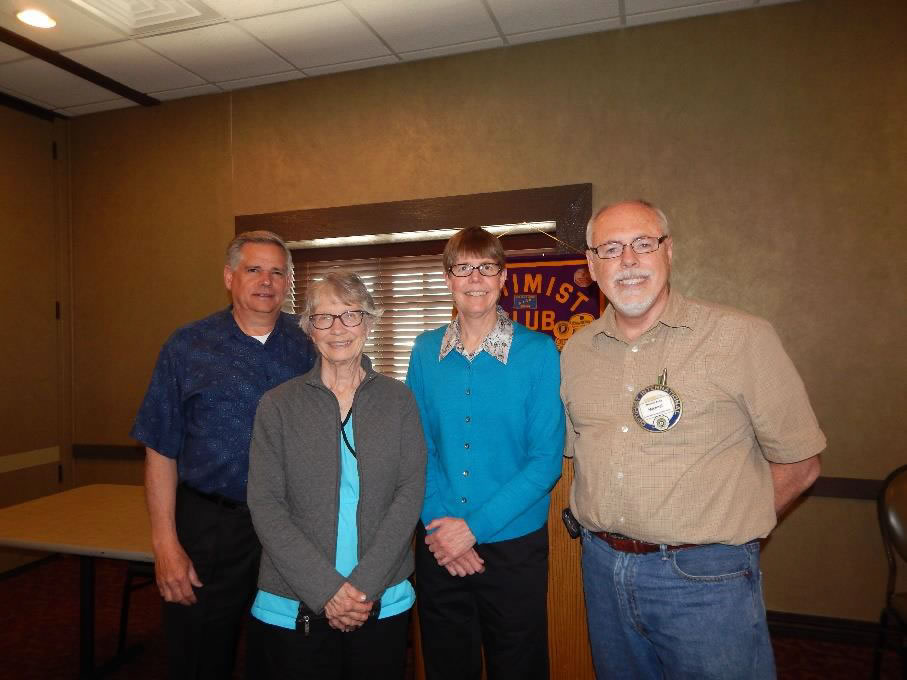
No one confessed to having a birthday, so no song was sung.
The secret handshaker was Bonnie Godby who picked Dan Collins as best handshaker.
Bonnie Godby announced that Nick Schenkel was the winner of last week's contest. This weeks contest was given by Chuck Hinkle.
Raffle winners were Ralph Green, Jim Oliver and Linda Runk.

PROGRAM: Dr. Debbie Knapp, board-certified veterinary oncologist, introduced by Tom Ganz
Dr. Debbie Knapp, a board-certified veterinary oncologist, spoke to us about the cancer research efforts that she and others conduct at Purdue. As part of her College of Veterinary Medicine duties, she is a member of the multiple-disciplinary Purdue Center for Cancer Research team and is a Board Member of the Cancer Institute. Her career specialty focuses on canine bladder cancers, which is strikingly similar to certain bladder cancers in humans. She intertwined three main themes: bladder cancer, dogs, and hope. There are a variety of bladder cancers and dogs can contract one of the worst forms in that it spreads to other organs. Treatments developed throughout her years at Purdue have dramatically increased average canine survival from 0 days to 450 days. Bladder cancer is now considered treatable with a 75% chance it can be controlled – but not necessarily cured. One issue is the resistance to treatments over time. Much of her presentation focused on the scientific and practical characteristic of treatment, research trials, and examples of remaining issues that suggest much work still needs to be done. Affected dogs are helping researchers progress on both the treatment and prevention fronts. Many of the drugs used to treat dogs are also prescribed for humans, and many drug regimens are being tested via four current clinical trials, all based on the professional expectation that treatment will be as successful as any other standard of care. Some of her work plays on the characteristics of naturally occurring tumor-suppressor genes found in animals (and humans). Campus and national collaboration between researchers, donors, and research subjects is essential to the successes of the program. In addition to treatments, much work is being done on the prevention of cancers. Based on the study of common harmful genetic variances (verses hundreds of un-harmful genetic variances) and harmful environmental factors, common preventive measures can be developed. She has experienced many successes, thus her optimistic ‘hope’ theme – which makes work exciting and fulfilling for her every day.